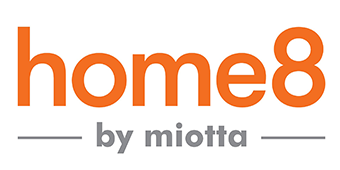News Source: Tech News World, https://www.technewsworld.com/story/85502.html
Smart Home Solutions
Mivatek Smart Connect, in Fremont, California, markets plug-n-play smart home solutions and services. In 2017, the company launched Home8care, a collaborative care and safety provider, to meet the growing needs of remote monitoring of the elderly at home. Mivatek developed a homecare system that integrates sensor and video recording technologies for fall detection and medication adherence purposes.
All issues regarding eldercare technology are critical, regardless of where the care is delivered, according to Joe Liu, CEO of Mivatek Smart Connect and Home8care.
However, “the aging-in-place trend — which allows seniors to remain in their homes for as long as possible, safely and independently — is currently the most significant catalyst of eldercare technology,” he told TechNewsWorld.
Eighty-seven percent of adults age 65-plus want to stay in their current home and community as they age, Liu said, citing AARP statistics. However, since many elderly persons will not be physically able to do so unassisted, the technologies to enable these seniors to age in place is of paramount importance.
“The technology needed is varied, and includes a multitude of devices that can keep our elders connected, protected and feeling safe at home,” Liu noted. “This includes interactive video, security, safety monitoring, medication adherence reminders, medication dispensers, activity trackers, panic and fall alerts, and emergency alert services.”
While the eldercare technology industry has been booming, there are distinct challenges that must be overcome, according to Liu.
“Chronic diseases, some of which will not respond to current treatment or cannot be monitored through current technology, are an issue,” he said, “and the cost to develop technologies that do work on these diseases is prohibitive.”
Also, “for those elders who are aging in place, privacy is an important issue,” Liu said.
“Many elderly people do not want to be monitored or watched, feeling it is an invasion of privacy,” he observed. “Thus, eldercare devices must either be small and unobservable or, in the case of wearables, very lightweight and barely noticeable.”
In addition, many eldercare devices are still only point-to-point solutions.
“It is important that eldercare devices are fully connected, so that everyone — caregivers, first responders, neighbors, etc. — can all be connected to an older person in a medical emergency for the quickest and most effective response, and thus the best outcome,” Liu said.
As for the future?
In the next few years, as well as over the long term, eldercare technology will be fully connected and automated, according to Liu.
“It will not only provide healthcare monitoring per se, but will tie into a home’s total automation ecosystem,” he said. “This is already happening now — a sensor on a refrigerator can let a caregiver know whether the senior living at home is eating regularly.”
Or a smart door lock that hasn’t been opened for a while can be cause for concern, as it might mean the elderly person hasn’t left the house for days, may have missed a doctor’s appointment, or may even be in trouble.
“In addition, emergency monitoring technology and alert services will be more popular,” predicted Liu, “as will wearable, preventive healthcare monitoring technology.”



Get Social